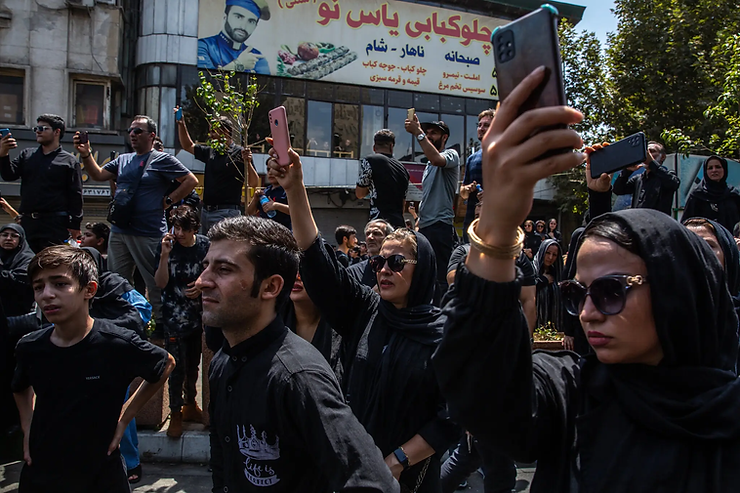By: Olivia Fang
On July 28th, 2023, a crowd of mourners dressed in black gathered around a mosque located in Yazd, Iran. They were there to celebrate Ashura, an Islamic holiday that falls on the 10th day of Muharram– the first month of the Iranian calendar (Islamic Finder). The day was supposed to be a holy day established to grieve the death of Imam Hussein, the grandson of the Prophet Muhammad (New York Times). However, this year, instead of reciting religious scriptures, the crowd sang protest songs, calling out the Iranian government’s mistreatment of its citizens. “We are mourning thousands of innocent lives, we are ashamed of this raging fire. Oh rain, oh storm, come. They have set fire to our tent,” the crowd chanted (New York Times).
The story of Ashura begins in the year 680 when Imam Hussein’s militia tried to overthrow Yazid, an Iranian leader that was “corrupt and unjust” (New York Times). In Karbala, Imam Hussein’s small militia met Yazid’s enormous army, leading to Hussein’s beheading (New York Times). Ashura is a day meant to “celebrate Shiite identity,” and later became a symbol of “the fight against oppression” (New York Times). As such, many protests have occurred on Ashura, such as the 1979 Iranian revolution (New York Times).
Across Iran, many other citizens came together to protest the government. In Dezful, the vocalist Ibrahim Nassrollahi led a mob of protesters, singing, “Oh, my country, do you know why I’m grieving? Their only concern is hijab. They don’t see the blood, the poverty. They are stealing the public’s money” (New York Times). These protests started last year, after 22-year-old Mahsa Amini was murdered by the Iranian police for “violating the mandatory hijab law,” causing many Iranian citizens to demand the end of the government and its brutality (New York Times). This led to the brutal slaughter of over 500 Iranian citizens, some of them being children (New York Times).
However, this year, the protests became much more widespread, in stark contrast to prior years. While the leader of Iran, Ayatollah Ali Khamenei, “encouraged Muharram ceremonies to be more political,” he didn’t expect his citizens to target and criticize the entirety of Iran’s government (New York Times). Mohamad Ali Ahangaran, an Iranian analyst of religion, stated in an interview with the New York Times that the protests this year were “targeting the way the leaders are governing Iran, the widespread corruption in the Islamic Republic, the political obstacles we face” at a much higher level.
Many Iranian citizens, ranging from the youth to the elderly, are fed up with the government. As 55-year-old Maryam tells the New York Times, “We saw the story of Ashura unfold in the streets with our own eyes as they slaughtered our youth last year. As a religious person, I want to completely separate myself from any ceremony connected to the regime.”
Source(s):
– Iran’s Ashura Rituals Have Become a New Form of Protest – The New York Times (nytimes.com)
– Ashura 2023 – When is 10th Muharram 2023 | IslamicFinder











